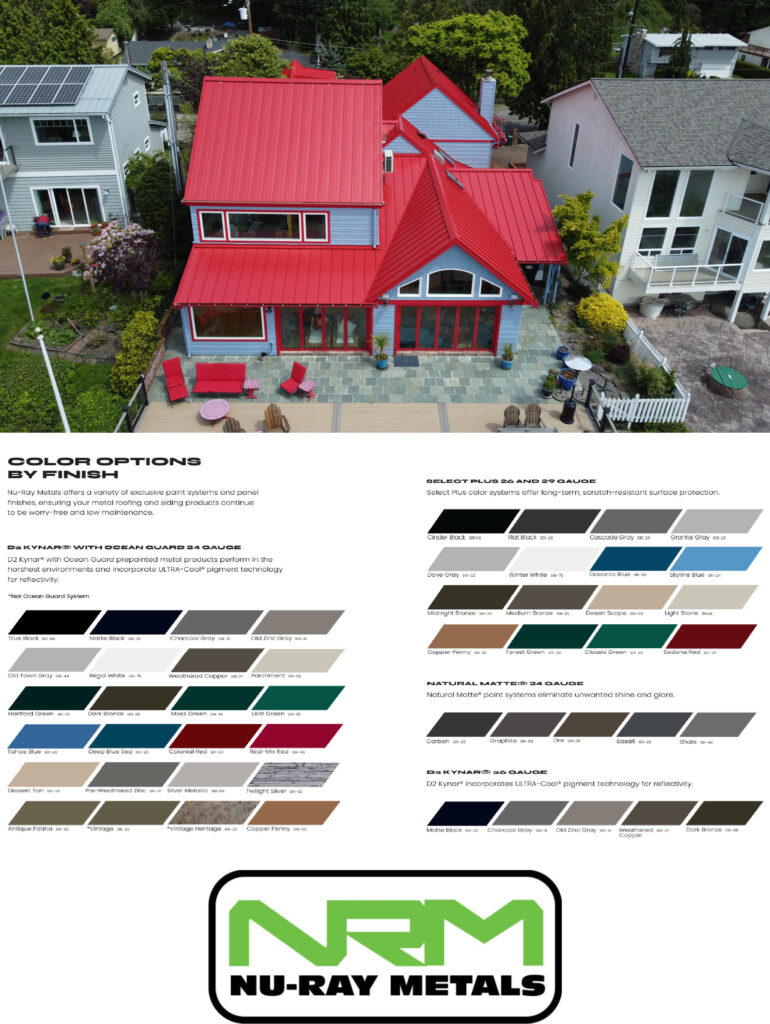Metal
Roofing
Seattle's Long Lasting Metal Roofs
While the initial cost for a premium metal roof is higher than most other roofing materials, you’ll save money in the long run. A metal roof can last a 2 to 3 times longer than other roof systems. A metal roof can also increase the resale value of your home and can even lower your homeowner’s insurance. Chances are good that a metal roof will be the last roof you ever install on your home.
Metal roofing in both light and dark colors reflects heat effectively to reduce cooling loads in the summer and insulate homes during the winter. This can help to lower energy bills. Most metal roofing comes with a true 30 to 50 year manufacturer warranty, plus a workmanship warranty from the installer.
A metal roof will not increase the likelihood of lightning striking your home. However, if your home were hit by lightning, your metal roof would disperse the energy safely throughout the structure. Since metal roofing isn’t combustible or flammable, it’s a low risk and desirable roofing option where severe weather is concerned, especially for lightning.
A common misconception is that a metal roof will be noisier than other types of roofing. When installed with solid sheathing, a metal roof on your home will actually silence noise from rain, hail and bad weather, many times much better than other roofing materials.
Today’s metal roofing systems are built to last. Steel metal roofing has a “metallic coating” made of either zinc or a combination of zinc and aluminum. This metallic coating prevents rust from forming and is bonded to the steel at the factory. Paint is then applied over the metallic coating to provide the long-lasting color homeowners desire.

There are three general categories of metal roof systems used for steep-slope roofing applications: architectural metal panel, structural metal panel and metal shingle/shingle panels. Generally, architectural metal panel roof systems are watershedding and are intended for use on steep slope roofs. Structural metal panel roof systems are used on low and steep slope roofs. Structural metal panel roof systems can be used on low slope roofs because of their hydrostatic, or water barrier, characteristics.
Because architectural metal panel roof systems typically are designed to be used on steep slopes that will shed water rapidly over the metal panels’ surface, the seams typically are not watertight. Many architectural metal roof systems are well suited for use on roof slopes of 3 inches per foot (14 degrees) or greater. One exception to the general slope guidelines for architectural metal panel roof systems is the traditional flat seamed, soldered or welded metal roof system, such as copper. It may be specified on slopes less than 3 inches per foot (14 degrees).
Most structural metal panel roof systems are designed to resist the passage of water at laps and other joints, as sealant or anti capillary designs can be used in the seams. Structural metal panel roof systems possess strength characteristics that allow them to span supporting members. Metal shingles and shingle panels are available in numerous varieties for use as steep-slope roof coverings. Most of the metal shingles are press-formed during the manufacturing process to provide a variety of shapes. These products can take the shape of individual or multiple asphalt, tile, slate or wood shingle configurations.
There are many categories of metal panels. The term standing seam often is used as a generic description for a class of metal roof seams. The name standing seam is derived from the fact that the seams are joined together above the panel flats.
